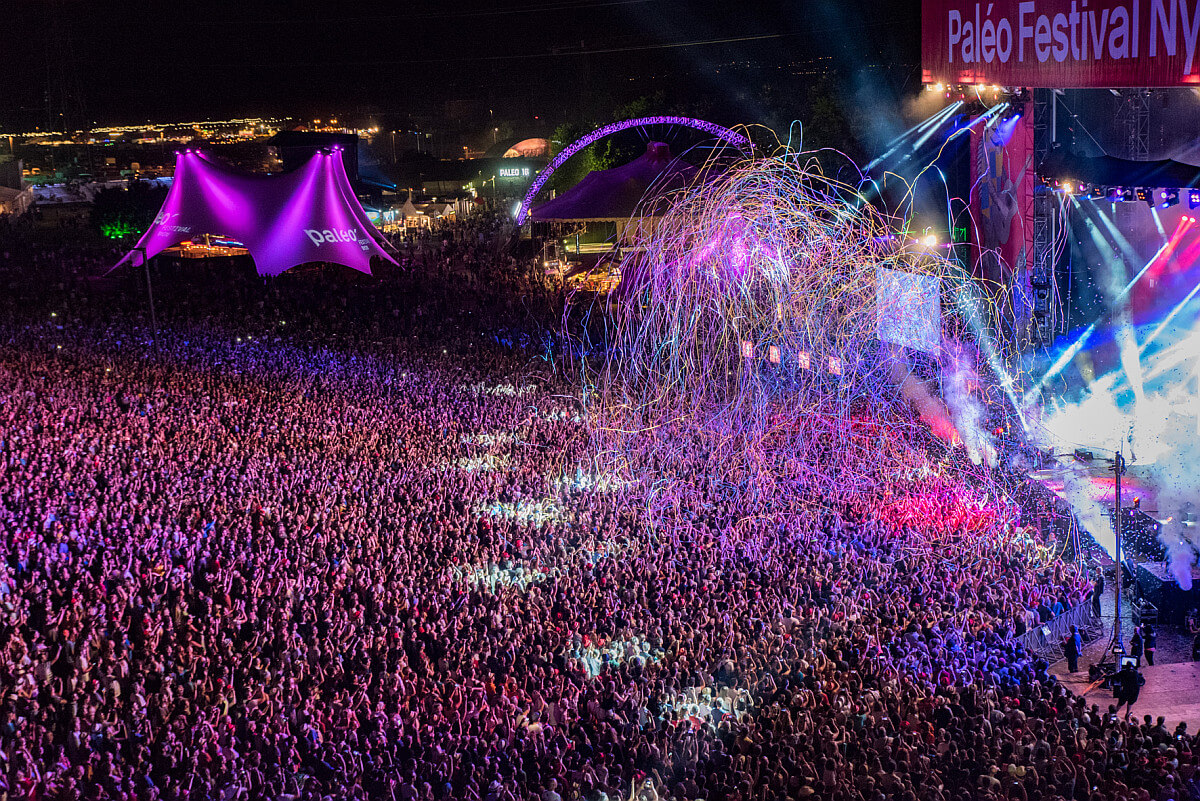Organize an event in a public place

Organizing an event in a public place: obligations, safety and essential tools
Organizing an event in a public space is much more than a question of logistics. It is to anticipate, to supervise, to secure. Whether it's a festival, an association market, or a sporting event, you're responsible for the safety of those present — and that starts long before the public arrives. The success of your event depends on your ability to anticipate constraints, to secure the spaces and to optimize the experience of the participants.
Between administrative authorizations, managing the flow of people and security requirements, the challenges are numerous.
In this article, we guide you step by step to organize a public event with complete peace of mind: legal framework, safety plan, crowd management and essential tools. Ready to take action?
The key steps to organize an event in a public place
Organizing a public event requires a rigorous methodology in order to avoid the unexpected and to ensure the smooth running of the festivities. Here are the essential steps you need to take for successful planning.
1. Select the appropriate location
The choice of location is fundamental for your event, whether it is a cultural event, the organization of a concert or any other outdoor event. Several criteria should be considered:
- Accessibility: Proximity to public transport, car parks, pedestrian paths.
- Reception capacity: The site must be able to comfortably accommodate the expected number of participants.
- Local regulations: Some public spaces may be subject to restrictions (parks, historic squares, etc.).
- Available equipment: It is important to take into account electrical connections, water points and sanitary facilities.
- Organizing a public event requires a rigorous methodology to avoid the unexpected and ensure the smooth running of the festivities. Here are the essential steps you need to take for successful planning.
Advice: Visit the locations in advance and consult the feedback of other organizers.

2. Declare your event to the town hall or prefecture
Most public events require prior declaration or official authorization, depending on their size and nature.
- Event < 1500 people: Declaration at the town hall (variable delay, often 1 to 3 months before).
- Event > 5000 people: Request for prefectural authorization (complete file with security plan).
- Exceptional events (concerts, sports, political gatherings): Obligation of a Special Security Plan (PPS).
To note: Some cities impose security perimeters or time constraints (noise pollution). In addition, the deadlines may vary from one municipality to another. Remember to consult municipal or prefectural services well in advance.
3. Evaluate logistical and human needs
An effective organization is based on a precise assessment of the resources required:
- Staff: Security guards, stewards, medical staff, technicians.
- Equipment: Barriers, stages, sound, lighting, mobile toilets.
- Ancillary services: Catering, first aid, waste management.
Tip: Use counting sensors to adapt the distribution of staff in real time according to the observed attendance.
4. Determine a gauge according to the type of event
A poorly evaluated gauge can jeopardize the safety, comfort of participants and even the legal viability of your event. That is why it is essential to pay attention to the reception capacity of the public. Several elements must be taken into account before starting.
Things to consider:
- Local regulations (municipal ordinances...).
- Nature of the event (concert, market, match, lounge...).
- Actual capacity of the site (surface area, emergency exits, traffic flow).
To avoid too many people, which would become difficult to manage, technological solutions such as smart sensors and Technis mats make it possible to measure inputs/outputs and to alert in case of overcapacity. No more risk of ending up with bottlenecks!
Event security: a priority issue reinforced by real-time data
Whatever the nature of your event, as an organizer, you are responsible for the safety of participants. This subject should be at the top of your priorities, especially in the context of Plan VIGIPIRATE, which imposes strict measures. Among the essential measures to be implemented:
- A reinforced security system (agents, cameras, surveillance...)
- Limiting access points for more effective surveillance
- The flow control and entry filtering (visual inspection, searches, etc.)
- Securing queues and external accesses (prevention of ramming vehicles)
- Compliance with ERP standards or the security of outdoor spaces
- La real-time management of the number of people present to avoid capacity overruns or crowd movements
The legal framework: what the regulations stipulate
Before organizing a public event, it is crucial to fully understand the legal rules that govern this type of organization. Whether you are organizing a small neighborhood event or a large festival, certain steps are essential to ensure regulatory compliance, public safety and your responsibility as an organizer.
Declarations and authorizations required
The first step is to declare your event to the competent authorities, at the town hall or in the prefecture, depending on its size and nature. This approach makes it possible to frame your event within a clear legal framework and to anticipate security needs.
Good organization is based on a precise estimate of the resources required:
- Staff: Security guards, stewards, medical staff, technicians.
- Equipment: Barriers, stages, sound, lighting, mobile toilets.
- Ancillary services: Catering, first aid, waste management.
Tip: Use counting sensors to adjust staff distribution according to attendance in real time.
4. Set a gauge according to the type of event
Setting a realistic reception capacity is a key decision. A poorly estimated gauge can quickly affect the smooth running of the event, both in terms of comfort and safety or compliance with standards.
Factors to consider:
- Local regulations (municipal or prefectural orders).
- Nature of the event (concert, market, sports meeting...).
- Actual capacity of the site (surface area, emergency exits, traffic flow).
To avoid overcrowding, technological solutions such as smart sensors make it possible to measure inputs/outputs and to alert if capacity is exceeded.
The legal framework: what the regulations say
Before plan a public event, it is essential to know well legal rules who oversee this type of organization. Whether it is a small local gathering or a large-scale festival, certain steps are essential to ensure the legality, safety and responsibility of the event.
Mandatory declarations and authorizations
Depending on the size of the event, the declaration of your event must be submitted to the town hall or the prefecture. It must include a description, a site map, as well as security and supervision measures. s. Depending on its scope, the request must be sent to the town hall or directly to the prefecture.
This file should include a precise description of the event, a site map, and the main security measures put in place. For events of more than 5,000 people, prefectural authorization becomes mandatory.
Finally, for so-called “sensitive” events — concerts, major sporting events, etc. — a Special Security Plan is required. This document details the entire security system planned, and is a key piece of your authorization request.
The civil liability of the organizer
The organizer is legally responsible for any incident that may occur during the event. Its civil liability may be incurred in the event of material, physical or intangible damage caused to participants, the public or third parties. It is therefore essential to take out appropriate insurance covering the risks associated with the event (stampede, damage to equipment, etc.). This is a step that is often overlooked, but yet essential, even for small events.
The safety and evacuation plan
For any event welcoming the public, a safety plan is essential. This plan should include:
- emergency devices,
- evacuation routes,
meeting points and emergency contacts.
The security and evacuation plan is not an administrative formality, but a concrete guarantee of reactivity and protection in case of danger. It must be designed in advance of the event, tested if possible, and known to all the teams involved. In the event of an inspection or incident, this document can make all the difference.
Health and accessibility: public comfort cannot be improvised
Organizing a public event requires providing appropriate sanitary facilities according to the capacity and needs of the public. The number of sanitary facilities and water points must be adapted to the size of the event, but also to the diversity of the audiences welcomed. They must be visible, well marked, and accessible to all, including people with disabilities. It is a question of comfort, of course, but also of compliance with hygiene and accessibility standards.
Taking care of these details sends a strong message and it is often this kind of attention that stands out. It improves the image of your event.
Ensuring the safety of participants: an imperative
In any event, the crowd management is a priority in order to guarantee the safety of participants. Today, it is possible to go much further than simple manual counting. Thanks to 3D sensors placed at the entrances and exits, you can follow the attendance live. Coupled with a data analysis tool like the one proposed by Technis, these devices make it possible to clearly visualize attendance, identify areas of tension, and adapt the device in real time, without approximation.
But the technology doesn't stop there. One event software dedicated makes it possible to centralize all information: occupancy rate, automatic alerts in case of overcapacity, coordination of staff on site... All via an interface that is easy to use. These tools facilitate decision-making in the field and offer real peace of mind to organizers.
Technis: intelligent solutions to strengthen event security
In this context, Technis supports organizers in setting up a digital security and flow management infrastructure. Our technologies — intelligent sensors, visualization platforms, real-time counting solutions — directly meet the requirements of the VIGIPIRATE plan:
- Accurate and real-time counting people on site
- Instant visualization of occupancy to anticipate risks
- Fine management of gauges according to the configuration of the site
- Entry/exit control to guarantee smooth and controlled traffic
- Data export for safety reports or post-event audits
Our solutions integrate perfectly for secure access, streamline flows and offer field teams total visibility on the dynamics of attendance.
Planning an event in a public place requires much more than simple logistical organization. As an organizer, you are no longer alone in ensuring the safety of your event. Thanks to Technis technologies, you can anticipate risks, react in real time and guarantee a secure environment for your audiences, while simplifying your operations. In a context of increased vigilance, every data counts, on every square meter.
Latest articles
Stay up to date with everything that's going on at Technis: product news, articles, and tutorials.







.jpg)
